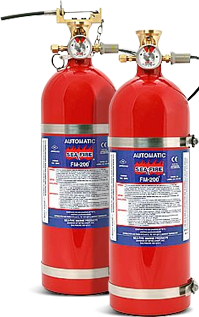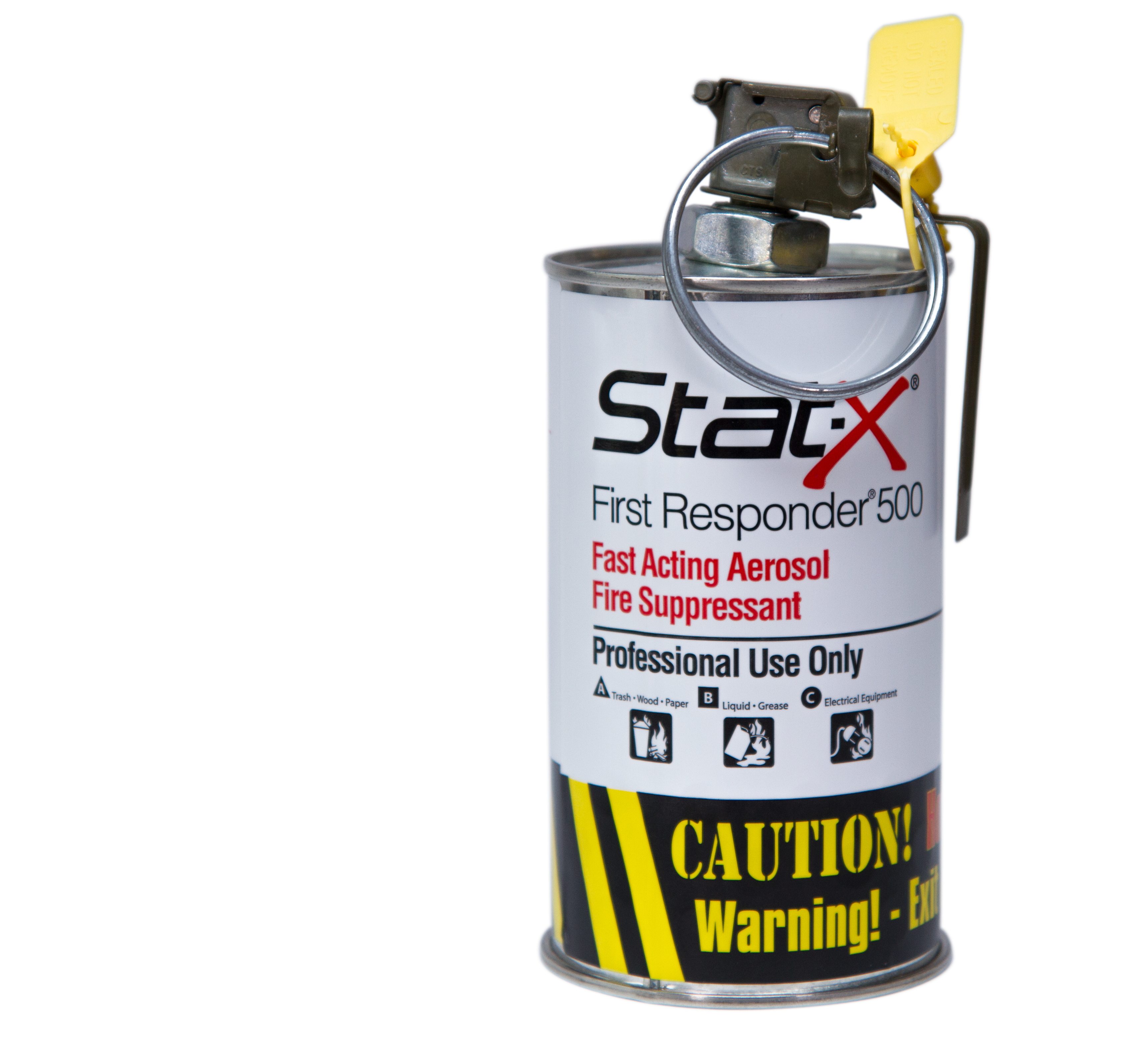Addressing Fire Suppression Needs for Electric Vehicle Charging Stations
As electric vehicle (EV) adoption rises, the risk of charging station fires increases. Choosing the right fire suppression system is crucial to protect infrastructure, reduce damage, and ensure safety at EV charging stations.
Key Takeaways
- EV Charging Stations Face Unique Fire Risks – Lithium-ion batteries can overheat, causing thermal runaway and intense fires.
- Traditional Water Systems May Not Be Effective – Water can worsen battery fires or cause electrical hazards.
- Gas-Based & Aerosol Suppression Systems Work Best – Inert gas and clean agent systems effectively suppress fires without damaging electrical components.
- Early Detection is Critical – Advanced heat and smoke sensors improve response times, minimizing fire spread.
- Compliance & Safety Standards – Proper fire suppression ensures compliance with NFPA 855 and local fire codes.
Is this really an issue?
There is no question that electric vehicles (EVs) are the next big thing. How big they ultimately become remains to be seen, but one thing is certain—there will soon be millions of EVs traveling highways all over the world. Bloomberg is now reporting that the production peak for gasoline and diesel-engine vehicles has already occurred.[i]

Explore further
The transition to an EV society has started, and we are presently seeing a sharp upturn in EV deliveries. From just 3 million EVs in 2020, there are expected to be over 66 million by 2040. In terms of new vehicle sales, EVs are expected to command a two-thirds market share by 2040 with the strongest penetration in Europe and China.[ii]
The beauty of electric vehicles is not having to fill them with hydrocarbon-based fuel or change their oil. But, what every one of them does need is a charging station. The success of the EV revolution depends on EV owners having access to an adequate charging network. And because, on average, an EV at full charge cannot travel as far as an ICE (internal combustion engine) vehicle with a full tank of fuel, there will need to be millions and millions of charging stations.
Today, charging EVs is big business. In 2020 it was worth $5.8 billion and finished 2021 at $6.8 billion, a growth of 17%. By 2025, it is expected to be a $20.5 billion industry with an annual growth rate of over 30%. The mathematics is simple—as more EVs are delivered, the installation of charging stations will have to expand to keep pace.[iii]
With the evolution of new technology, new risks inevitably evolve as well. And EVs will be no different than other industrial disrupters. The threat from ICE vehicle fires and filling stations is well known and documented. But what we do not know yet is the level of hazard that will accompany so many vehicles being charged all over the world.
What we do know, however, is that charging lithium-ion batteries is not without risk. There have been numerous consumer lithium-ion battery issues in the media (e.g., Samsung Galaxy phones), and several large-scale lithium battery energy storage system fires in various locations. So, while the fire risk with EVs so far has been proven lower than ICE vehicles (.03% chance of ignition versus 1.3% for ICE vehicles[iv]), there is a degree of risk. And with millions of EVs being charged every day, there will be fires.
What are the different types of EV chargers?
According to the US Department of Energy, there are currently over 54,000 public EV-charging stations in the U.S. and Canada.[v] However, most EV charging takes place at the EV owner's home.[vi] The remaining charging takes place in parking lots, parking garages, hotels, and retail establishments, and at the gas-station-style charging stations which continue to increase in popularity.
EVs operate on DC power from the lithium-ion battery energy storage system (BESS). The EV's BESS can be recharged by one of three levels of chargers.[vii]
People also search
Level 1 chargers are entry-level home chargers included with the vehicle that use a 120-volt AC household receptacle. They are easy to install, but they provide the slowest recharge.
Level 2 chargers are 240-volt AC chargers—the same amount of power used for an electric clothes dryer. These too can be found in homes as an aftermarket option, but they make up the majority of public charging stations. As would be anticipated, Level 2 chargers are considerably faster than a Level 1.
When using Level 1 and Level 2 chargers, the power is converted from AC to DC by an onboard converter.
Level 3 chargers are the fastest of the group. They are 480-volt DC chargers which means the power does not need to be converted. Their higher voltage provides a much quicker recharge time, but not all EVs are Level 3 compatible.
Question: What is the best fire suppression system for electric vehicle charging stations?
Answer: The best fire suppression system for EV charging stations uses gas-based or clean agent systems like FK-5-1-12 or CO₂, which effectively suppress fires without damaging sensitive electrical equipment or worsening lithium-ion battery fires.
What is the fire risk when charging an EV?
Understanding the fire protection problem with EV charging has two facets to consider: one, the charging station; and two, the EV itself (specifically, the BESS in the EV). In most fire incidents, the fire will likely have originated because of a fault in one of these two areas.
Charging stations consist of the charger, the cable, and the connector that plugs into the vehicle. To be sold in the U.S., the equipment must meet Underwriters Laboratories (UL), International Electrotechnical Commission (IEC), and Federal Communication Commission (FCC) requirements. The charger manufacturers also require that the installation be in accordance with the National Electric Code (NEC).
The referenced certifications are meant to require/impute safety to the charging system with a particular emphasis on protecting against a fire. This is because fire is the most significant hazard during EV charging. In addition to the above-mentioned certifications, most charging stations also include the following equipment to help prevent fire:[viii]
- In-Cable Control Box (ICCB)
This device is installed in the cable between the charger and the vehicle. It protects against over- and under-current.
- Ground Monitoring
Various measures are installed such as ground fault circuit interrupters or leakage current detection interrupters to protect against electric shock and/or fire.
- Temperature Control
Sensors monitor for excessive temperature in the system and shut down power if an abnormal increase in temperature is detected.
All this protection is valuable, but it does not eliminate risk from the charging process. All the charging components must be free of defects. Furthermore, the system must be installed strictly to NEC standards with defect-free components and properly maintained thereafter. Considering the hundreds of thousands, and eventually millions, of EV charging stations to be deployed, inevitably, there will be failures, and fires.
Specifically, the charger faces the same fire risk as does any electrical device. Short circuits, arcing, improper wiring, and outdated equipment anywhere in the system can all lead to fires. Defects in any of the safety equipment can also lead to fires. For example, it is estimated that ground fault circuit interrupters (GFCI) fail approximately 57% of the time.[ix] Lightning strikes and grid surges can also create a fire risk for EV chargers.
On the other side of the EV charging equation is the vehicle being charged. An EV is essentially a passenger compartment strapped to a rolling platform of lithium-ion batteries and electric motors. Lithium-ion batteries are known to have an elevated risk of fire due to physical damage, overheating, overcharging or product defect. As EVs continue to proliferate, the number of fire incidents will only increase.
To fully understand the fire risk, it is first important to understand how lithium-ion batteries fail.[x]
- Stage 1
A battery cell becomes compromised through mechanical damage, an internal or external thermal event, or through an electrical fault.
- Stage 2
Small amounts of gas—typically hydrogen—are generated and released from the cell with an accompanying release of heat; this is known as "off-gassing."
- Stage 3
With increasing heat levels, smoke begins to emit from the cell. The presence of smoke is indicative of an impending catastrophic event in which ignition and thermal runaway are the likely outcomes.
- Stage 4
Fire ensues and a chain reaction failure of adjoining cells is probable, along with the possibility of explosion.
Thermal runaway is defined as the condition in which the heat inside of a cell rises much faster than it can be dissipated. This leads to a rapid release of energy which ignites the flammable vapors present from the off-gassing phase. Adjacent cells are adversely impacted by the fire and can fail in a similar fashion. This can lead to a domino-like effect in which cell after cell fails and ignites, often with disastrous results.[xi]
Studies show that most fires and explosions in lithium-ion batteries occur during charging.[xii] The dramatic consequences of a BESS failure while being charged were caught on tape in China. Please watch this less than 3-minute video to witness how devastating an EV charging station fire can be. The following passages refer to the video. This footage is helpful and demonstrative in understanding the fire risk at an EV charging station.
This fire follows the BESS failure model completely. At 0:10, a puff of smoke can be seen exiting the rear of the vehicle—the first outward sign that something is amiss. Stages 1 and 2 have occurred and now the failure model is at Stage 3 where smoke is emitted.
The situation inside the vehicle deteriorates rapidly. The failing battery emits large quantities of smoke under pressure until 0:26 when an explosion of some type occurs. This is clearly Stage 4. By 0:30, fire is steadily venting from the vehicle accompanied by a high-pitched whistling sound. This is burning pressurized flammable gas from the BESS as it enters thermal runaway.
At about 1:00, a significant amount of fire begins impinging the adjacent cargo vehicle that is also being recharged. By 1:10 the cargo vehicle is also burning. At approximately 1:22, the cargo vehicle's brakes fail, and it rolls back about 20 feet, as the fire continues to spread. The vehicle where the fire began is fully involved with fire at this point as well.
At 2:00 minutes, the cargo vehicle is heavily involved with fire and fire spreads to a third vehicle, also being recharged. At 2:05, the cargo vehicle begins venting fire as, most likely, its BESS also experiences thermal runaway. At 2:23, a small explosion is apparent, originating from the cargo vehicle (possibly a tire failing), the third vehicle begins to become more heavily involved with fire, and sirens can be heard in the distance.
The video ends at 2:56 with all three vehicles burning and a probable BESS failure in the third vehicle if fire crews do not intervene in time. This became a very complicated fire situation in under three minutes, well inside of the 4-minute response time the NFPA sets as the gold standard for fire services.
While it is unknown what caused the fire in the video, it was very instructive in illustrating the failure mode of an EV's lithium-ion BESS. Additionally, the video demonstrated that BESS failure can and does occur during charging and can develop into a significant fire quicker than most fire departments can arrive.
What type of fire protection is useful at EV charging stations?
Currently, incidences of EV fires appear to be roughly divided evenly between fires after crashes and fires while parked and/or charging.[xiii] As EVs continue to gain market share, these incidences will continue to occur and become more frequent. Clearly, there is a need to provide fire protection at EV charging stations.
There are several factors to consider when choosing a fire protection system for this application. EV charging stations can be installed almost anywhere. Large-scale, filling-station-style EV charging stations are beginning to become commonplace. This makes choosing a single type of fire suppression system that fits all installations challenging.
Sprinkler systems or clean agent systems can be expensive, due to the complexity of piping networks required, and the infrastructure enhancements needed. Both can also take up considerable storage space due to agent storage containers or large pumps. Neither are an ideal option for protecting EV charging stations.
However, there is one system that can function with no external power, is easy to install, requires limited maintenance, and has demonstrated compliance to UL 9540A, in lithium-ion ESS applications and electrical fires. This is the condensed aerosol product known as Stat-X®.
Stat-X is supplied in units that can function as unconnected standalone units designed to activate at a pre-determined temperature. Alternatively, multiple units can be connected together and tied to a fire detection system to operate as a total flooding system.
Upon activation, the proprietary agent is discharged as an aerosol. The agent disrupts the chemical chain reaction of a fire quickly to cause rapid suppression. In enclosures, the agent can remain suspended for up to 20 minutes to provide reflash protection.
Most importantly, Stat-X has been rigorously tested at the prestigious DNV testing laboratories and was demonstrated effective at rapidly suppressing BESS fires and preventing thermal runaway in stacked BESS. Stat-X is also commonly installed to protect electric enclosures so it additionally provides fire protection in the event the wiring or charging system should fail and ignite a fire.
Stat-X is an environmentally friendly way to provide fire protection and has no ozone-depleting potential, no global-warming potential, and zero atmospheric life. It is safe to use around personnel and requires minimal cleanup after discharge. The units are supplied in a variety of sizes and configurations to meet virtually every EV charging station need. Stat-X provides an excellent use of financial resources while also providing superior fire suppression versus other types of systems available.
* * *
EVs are rapidly becoming commonplace in society. Charging EVs will become routine and available everywhere in the not-too-distant future. Fires in charging stations and the EVs themselves are going to be an issue that will eventually receive guidance from organizations such as the National Fire Protection Association (NFPA) and the federal government. In the meantime, it is best to get in front of the issue and proactively provide fire protection. Stat-X offers a simple, comparatively inexpensive, and reliable manner with which to provide EV charging station fire protection.
White Paper by Fireaway LLC













